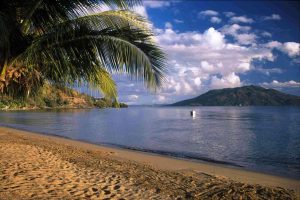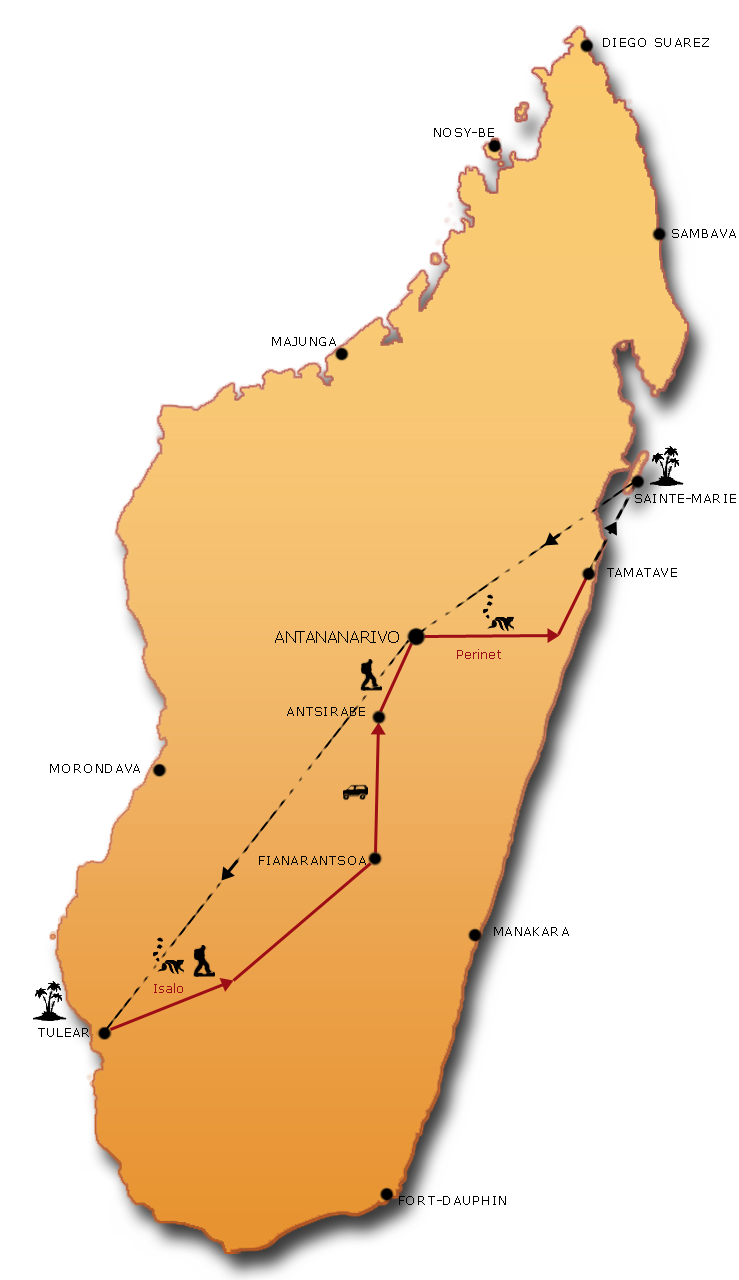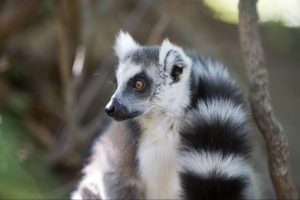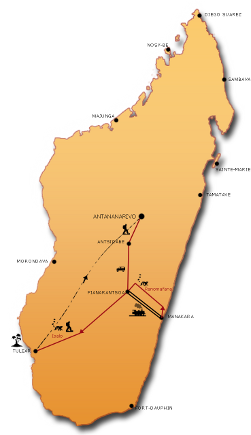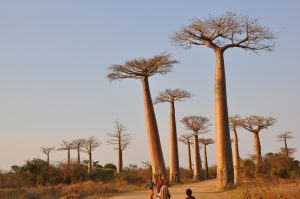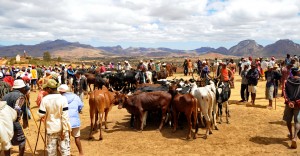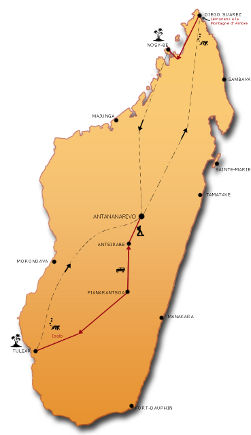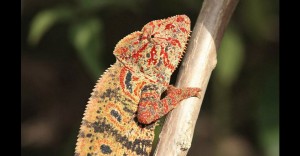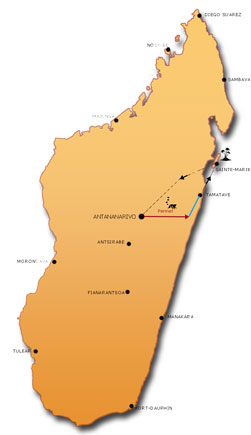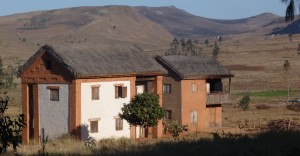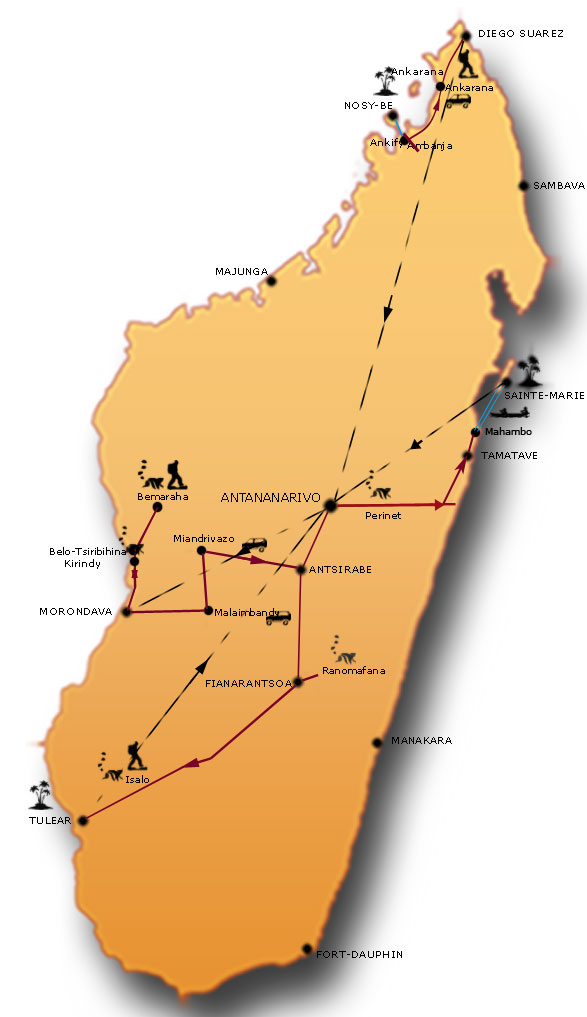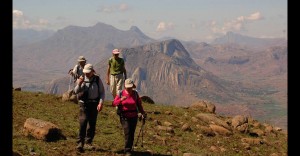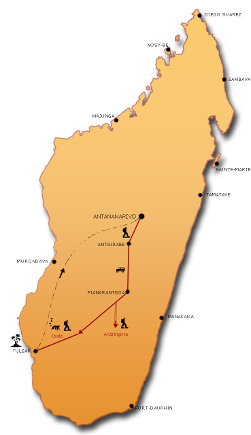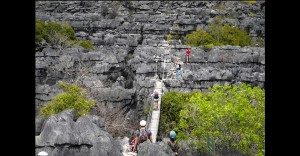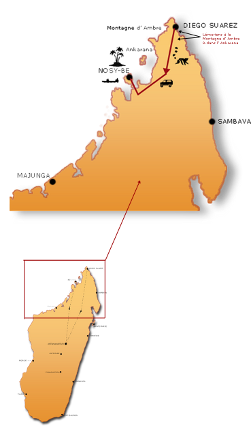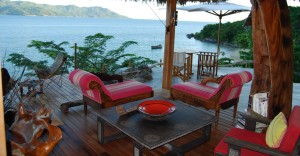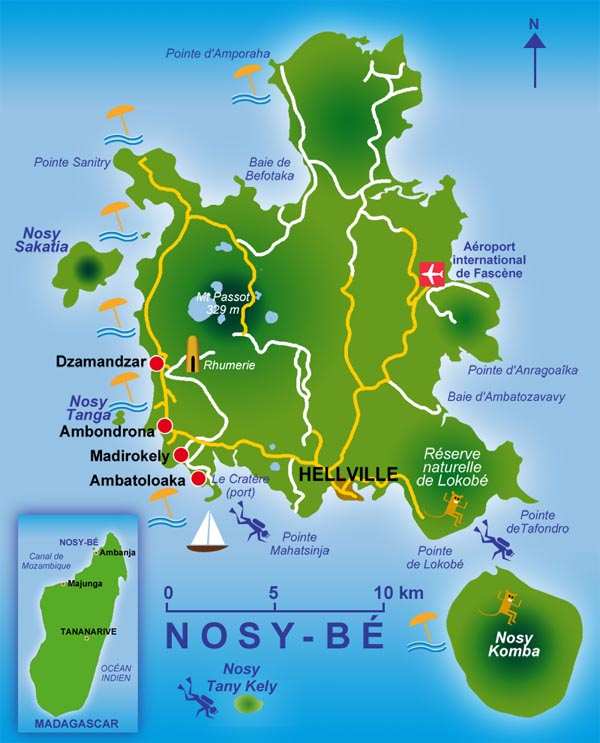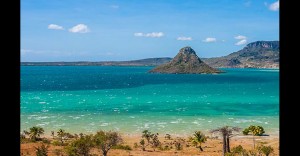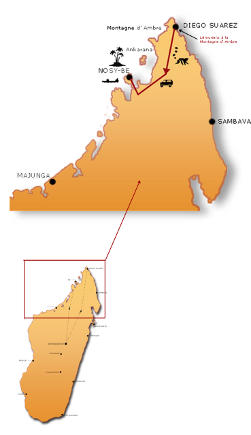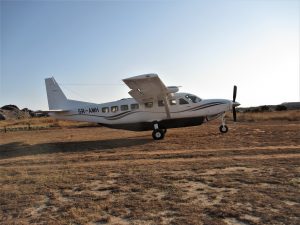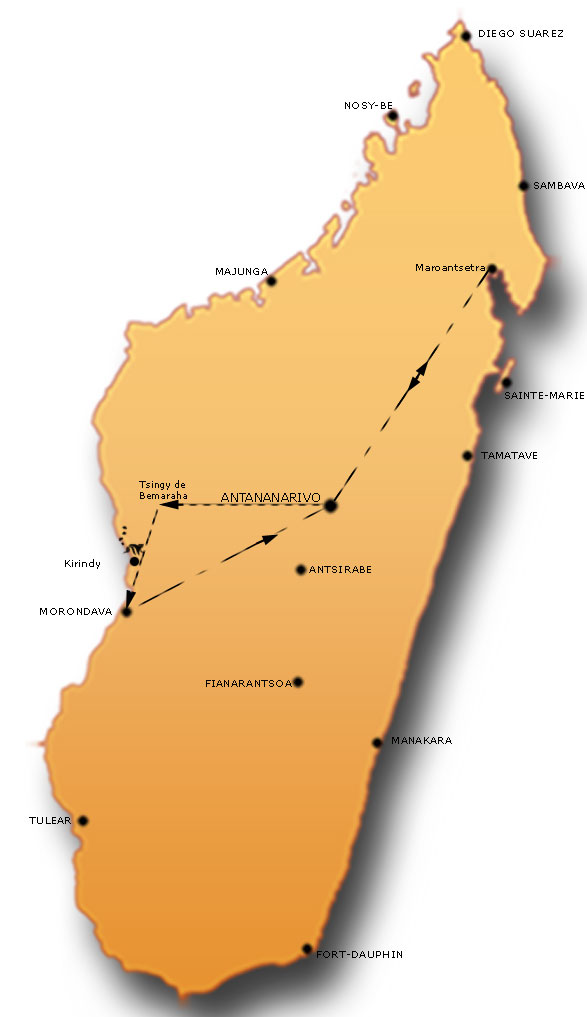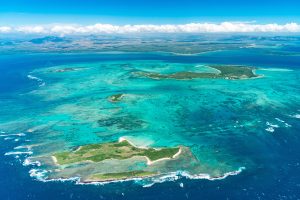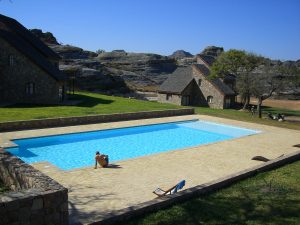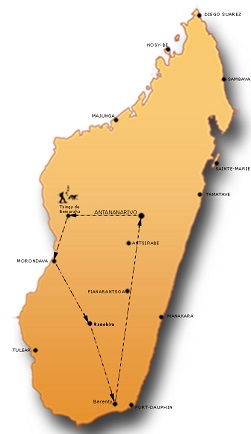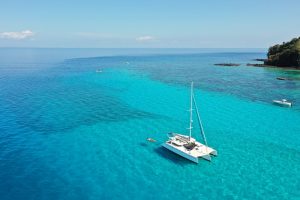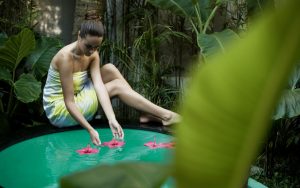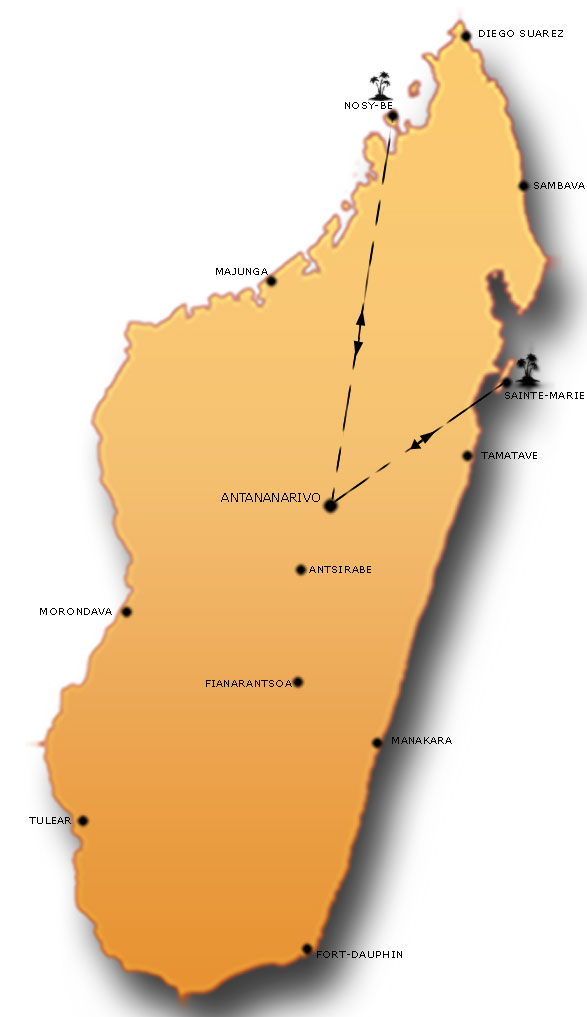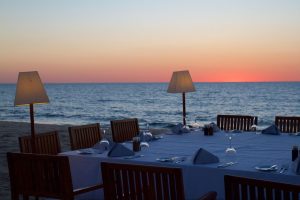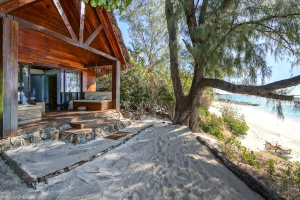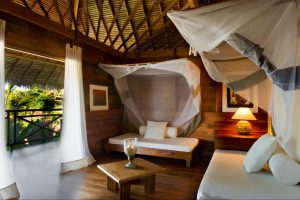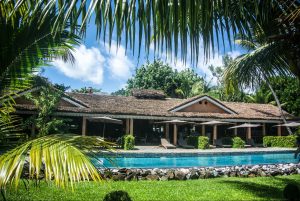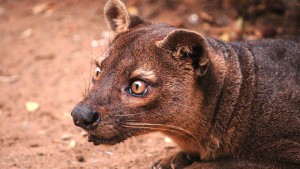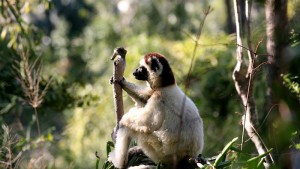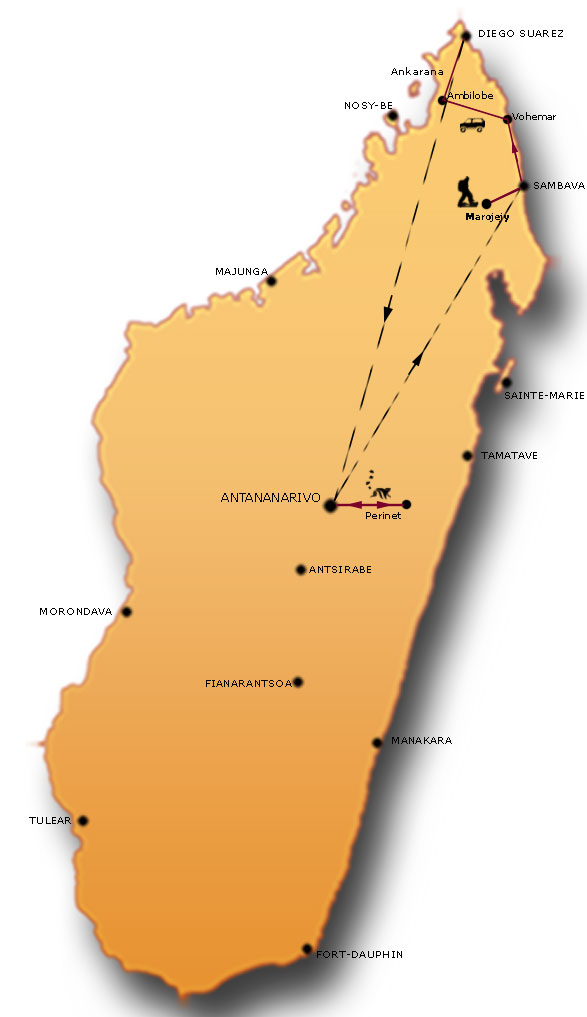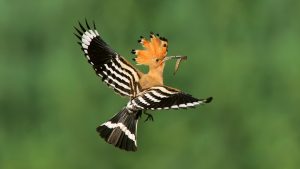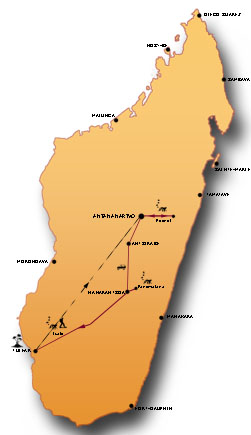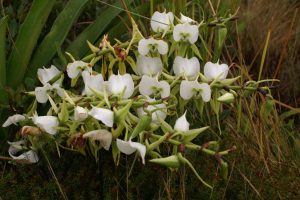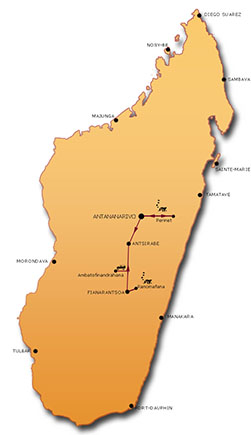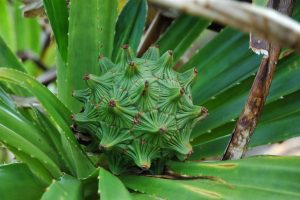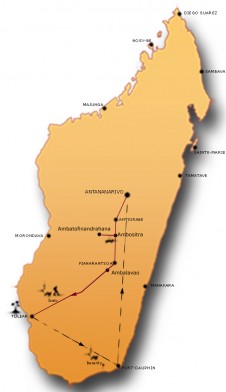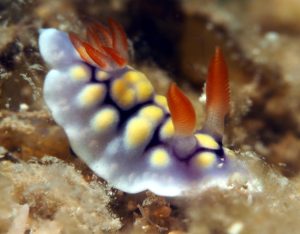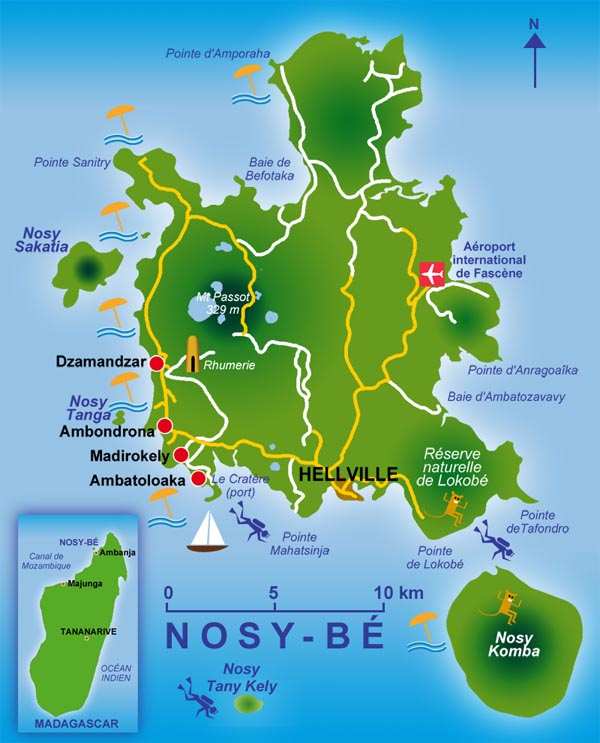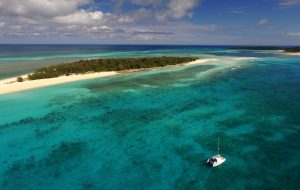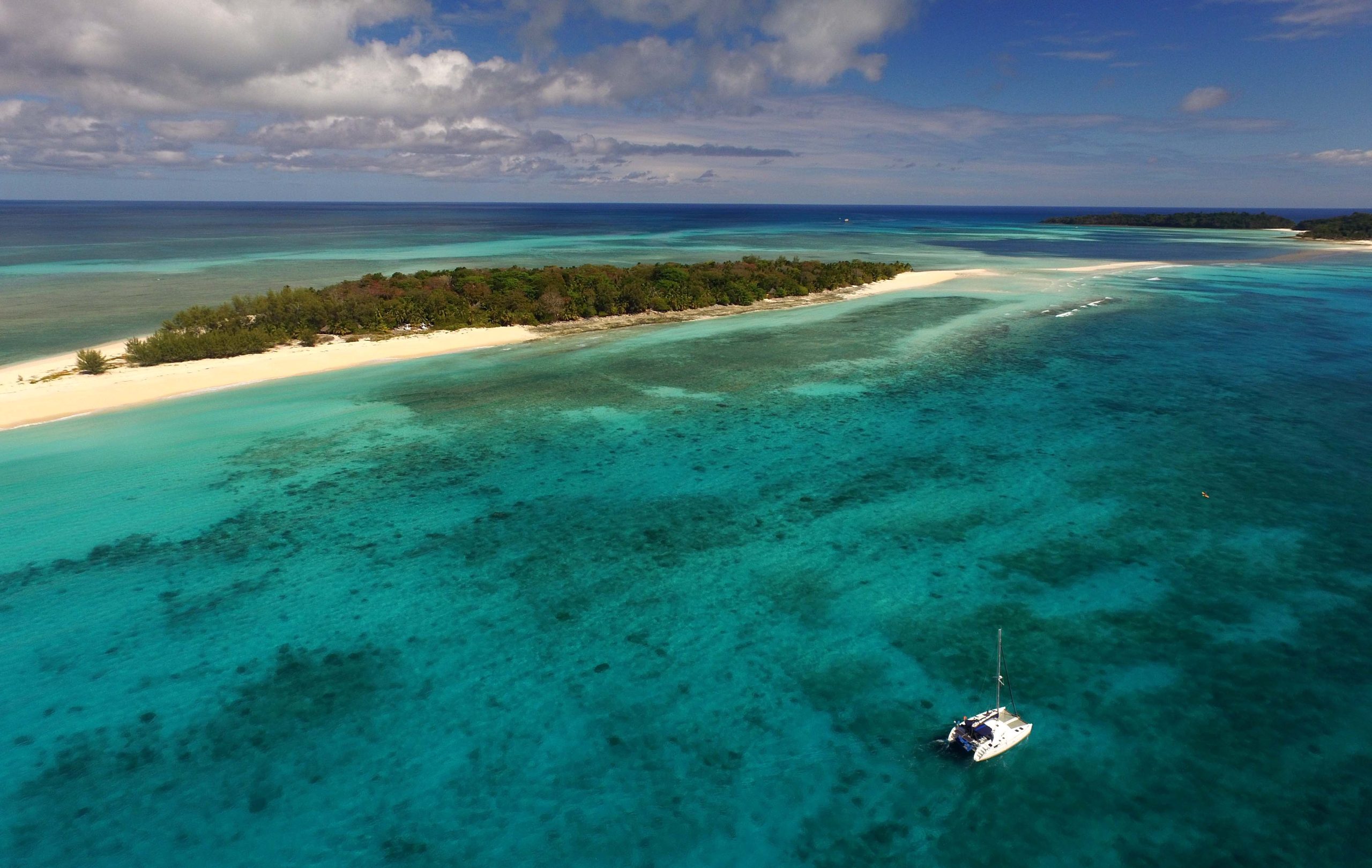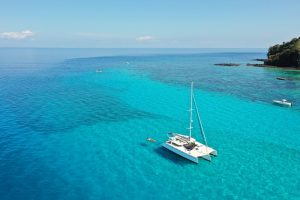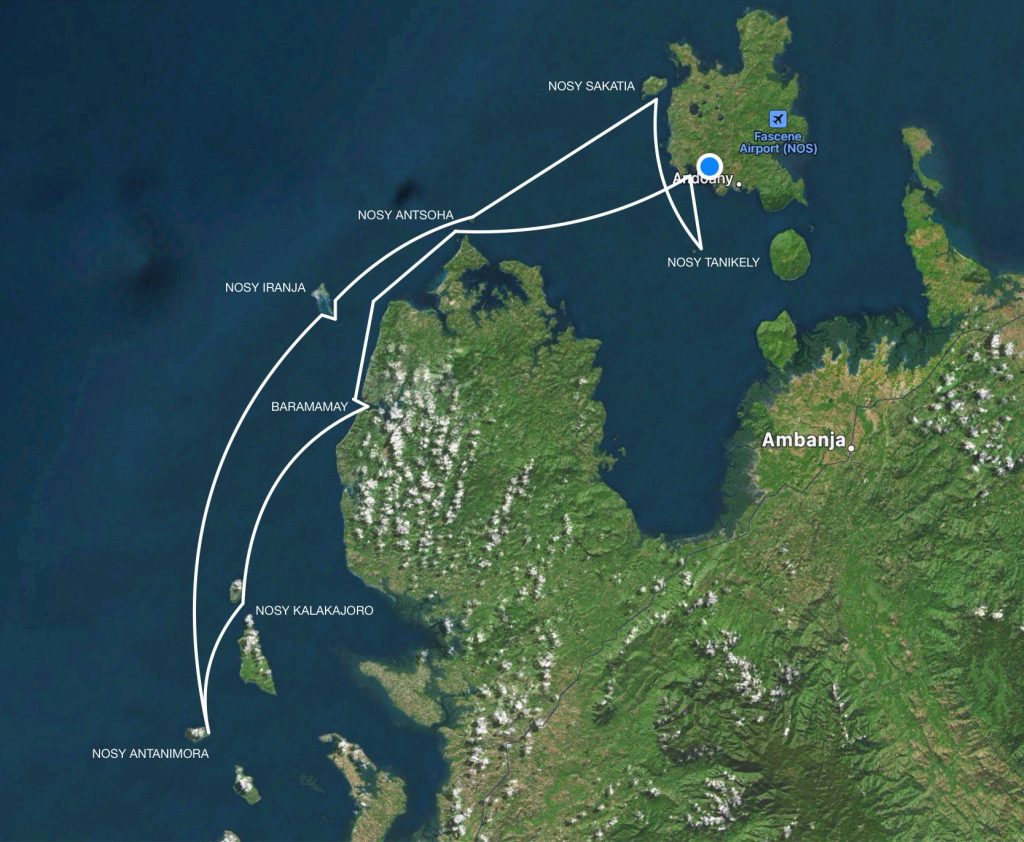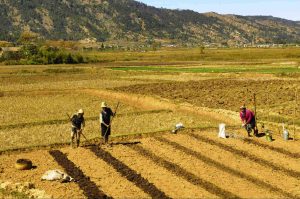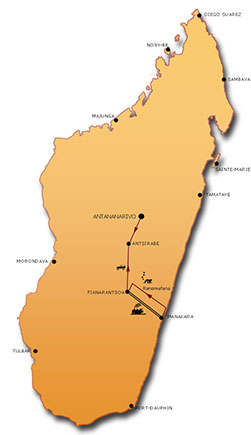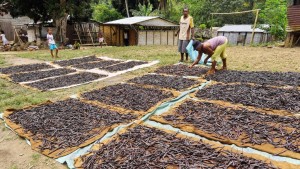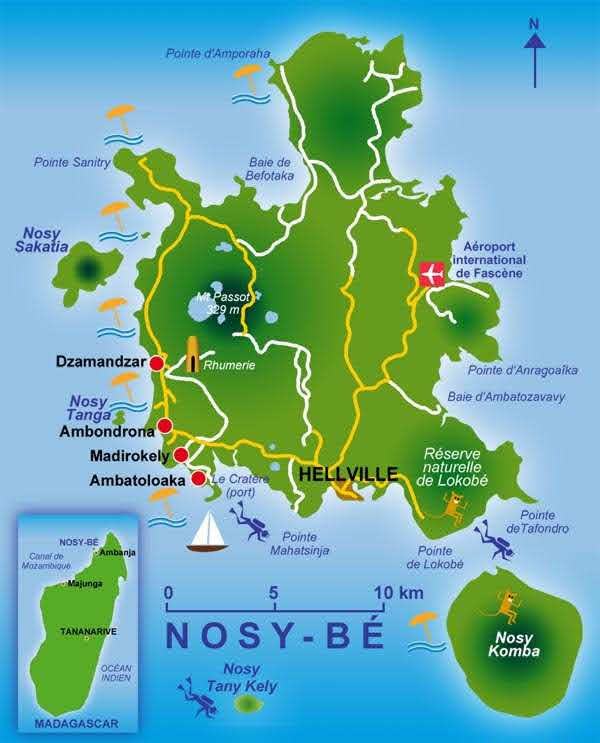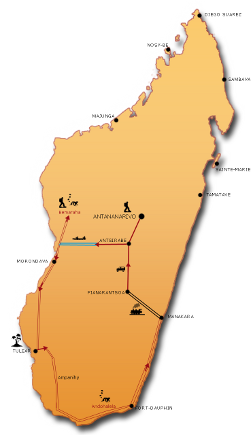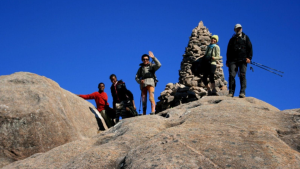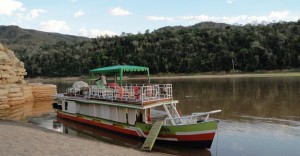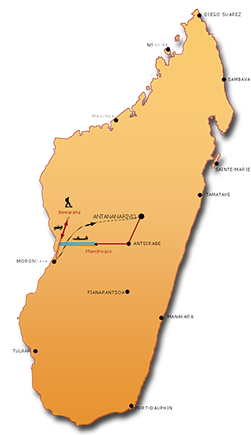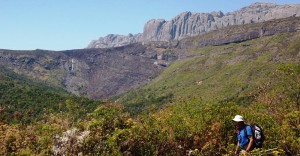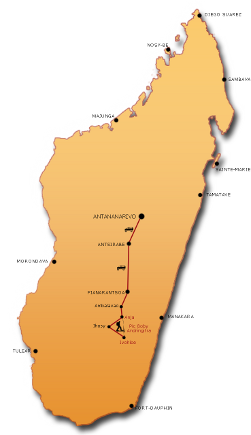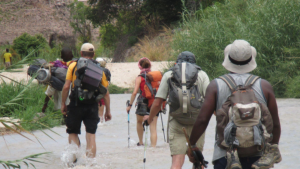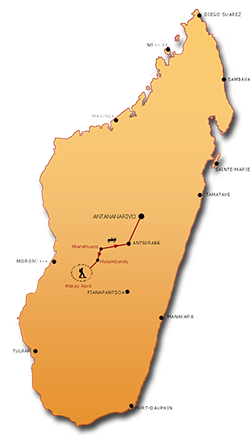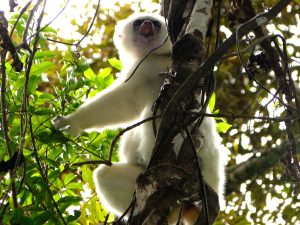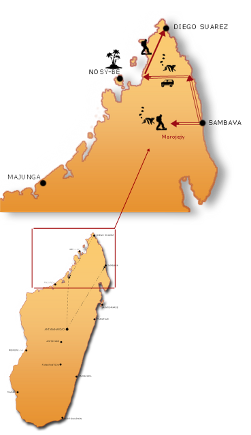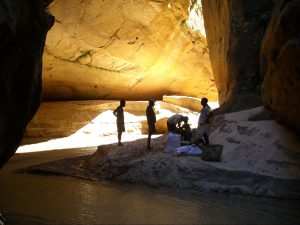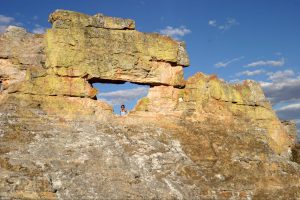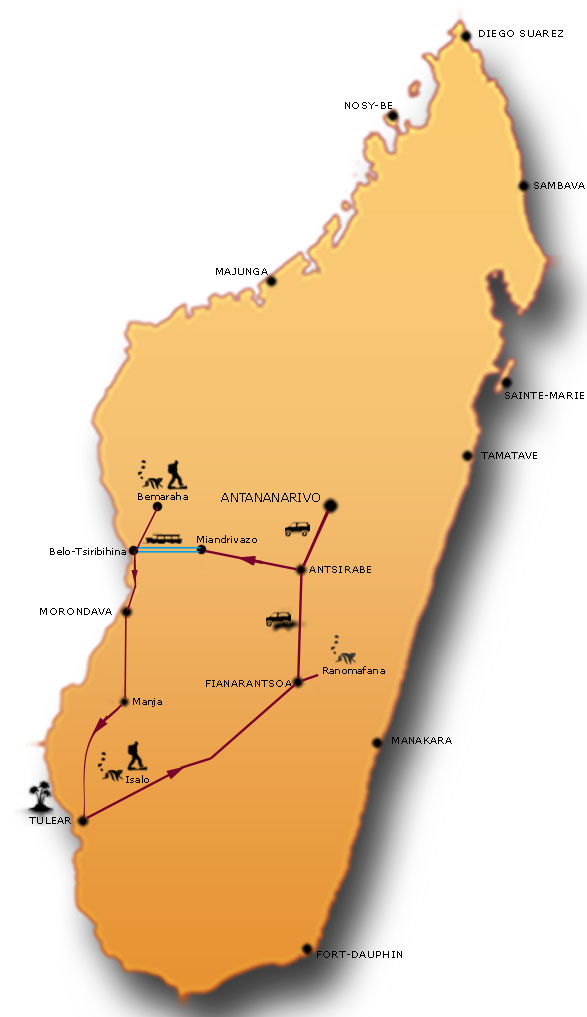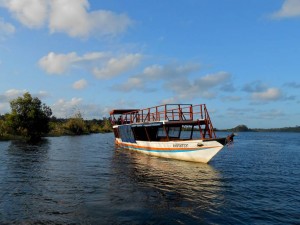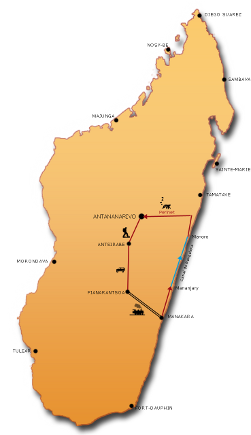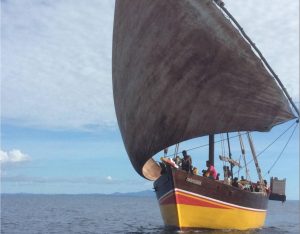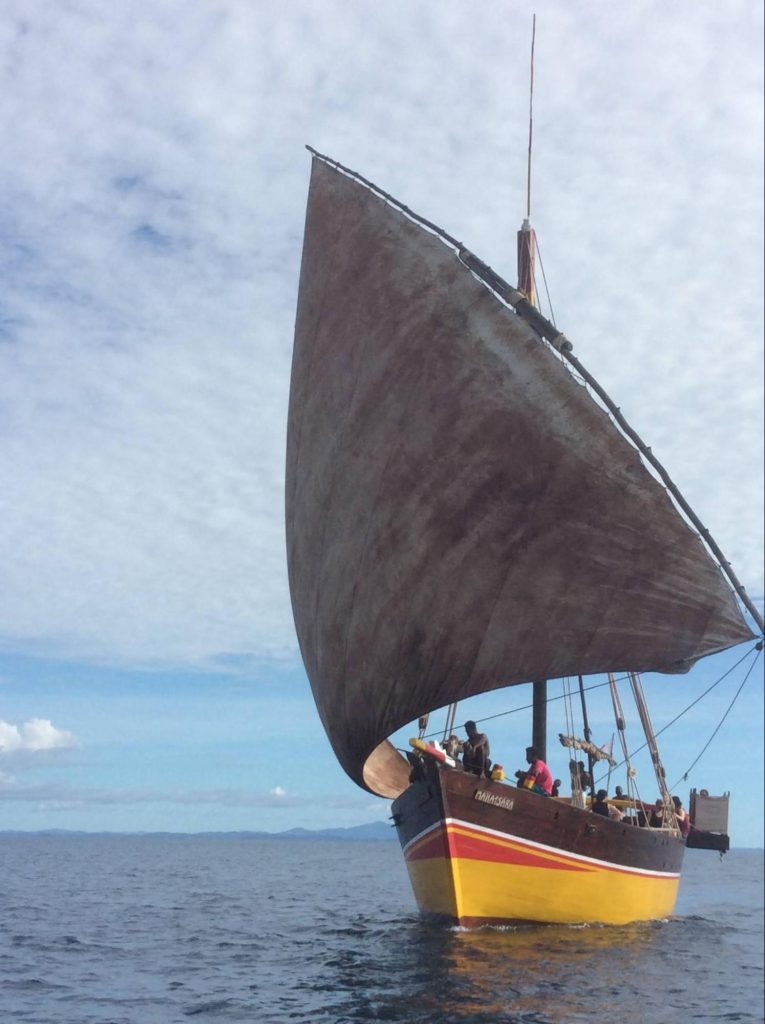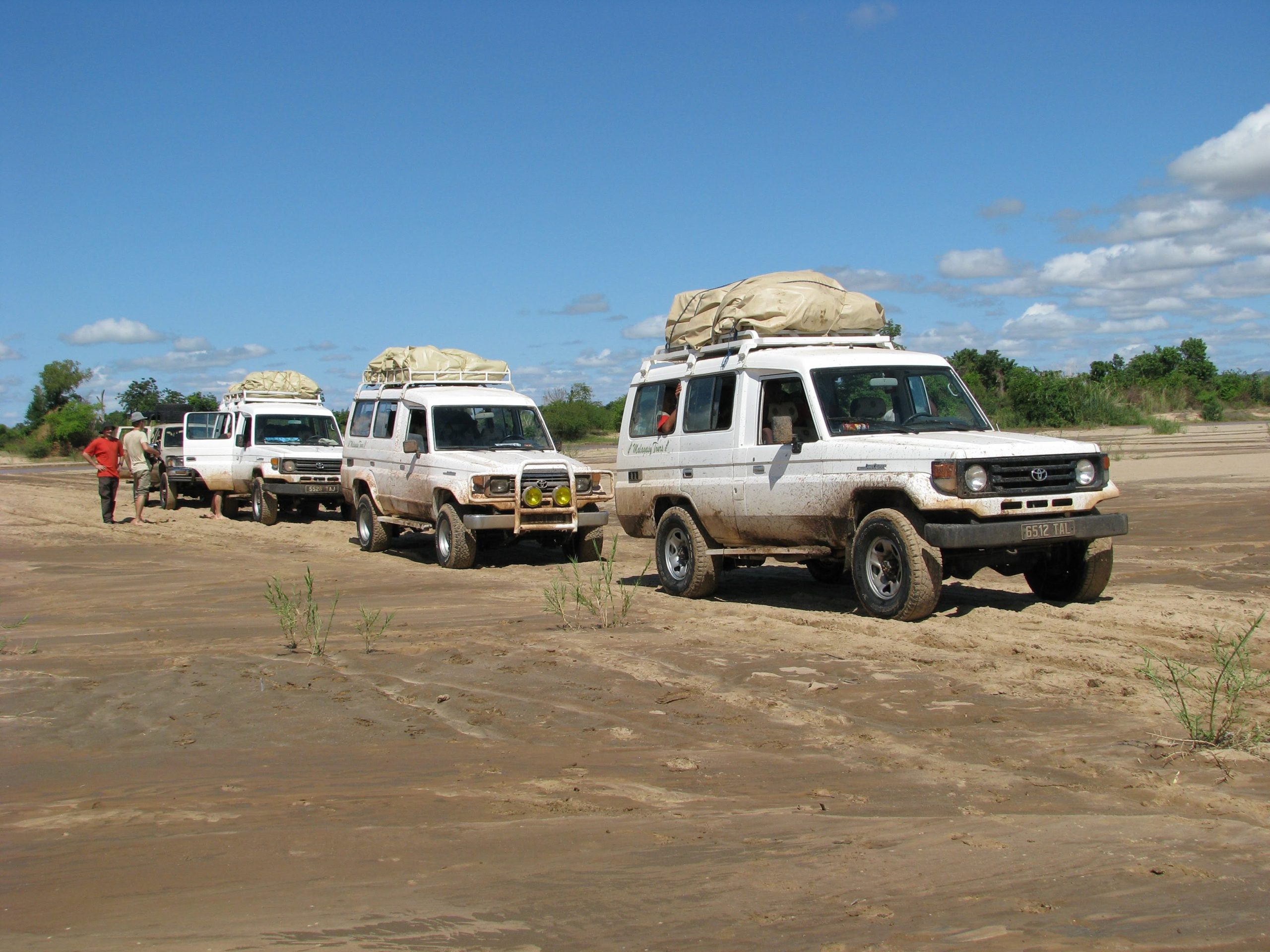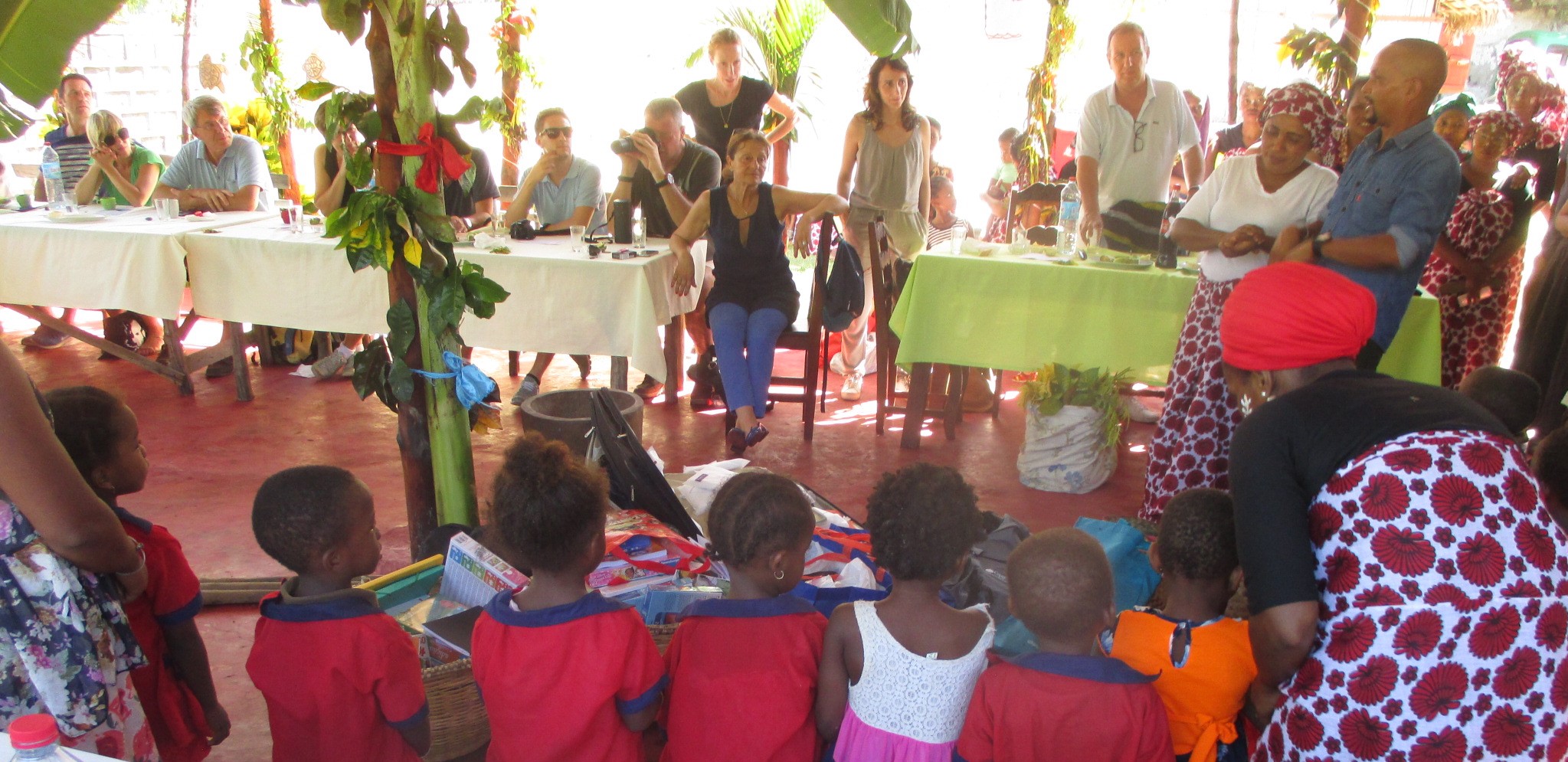
Malagasy amphibians are represented only by the frogs.
The Ranidae are represented by three sub-families. The Ptychadena mascareniensis species, by its morphology and its behavior is similar to frogs of the Northern Hemisphere.
The tree frogs
The most particular Malagasy species are the ones belonging to the genres Mantella and Mantidactylus.
The species of the genre Mantella are characterized by a tint very contrasted with yellow, black or green spots, which indicate, generally, their poisonousness. In fact at the level of the skin, Mantella metabolizes alkaloids which they absorb by eating insects (ants), and which protect them from predators.
This type of chemical is very similar, if not identical, substances of another group of frogs, Dendrobatidae who live in Central and South America. These phenomena encountered in parallel among Mantella and Dendrobatidae show “evolutionary convergence” with similarity of adaptation to the constraints of nature in both groups than anything else apart.
The most known Mantella is the ones of red color resulting from the region of Andasibe: Mantella aurantiaca. These small frogs are threatened by the excessive capture for their export in Europe and in America (the terrarium markets), but also by deforestation.
The species of the genre Mantidactylus, are generally typical from East rain forests.
Although their number is enough big, their adaptation does not arrive at the level of Mantella, and generally the type of reproduction is similar to that of the typical frogs: eggs are put down in the brooks of forests or in the temporary puddles, where tadpoles develop, although Boophis (40 species approx. known at present) prefers the housing environment of rain forests.
These species can survive in rather degraded environments like rice fields.
The Microhylidés
As for Mantella, the red-lively color is synonymic of toxicity.
Other species of Dyscophus are more difficult to observe by the uninitiated.
Platypelis and Anodonthyla species lay their eggs inside bamboo canes filled with water, or at the base of palm leaves or Pandanus.
Platypelis Grandis lays its eggs in small pools at the base of the palms of the traveller’s tree (Ravenala).
Zebus are of African origin as well as bush pigs. Among small mammals there may be mentioned the insectivores belonging to the family of tenrecs (Tenrecinae).
The small shrews of the genre Micromange and the tenrecs of the rice are among the smallest placental mammals, and it is necessary to notice that they have a rather particular reproduction, with a very high number of young. Besides, their sexual maturity can be effective sometimes from the age of 2-3 months. The species of the genre Micromange and Oryzorictes lives especially in the east forests, where it feed small ground invertebrates or small vertebrates.
The bigger species of the family of Tenrecinae are endowed with thorns and they look like the European hedgehogs, this similarity is especially obvious with Setifer setosus who is practically a “photocopy” of the hedgehog of Europe, although they belong to totally different families.
Hemicentetes semispinosus, called “tsora” is, on its side, a partially diurnal species and it is easy to observe it in herbs near Maroantsetra, in the northeast of Madagascar. A similar species, nigriceps H. is on the other hand, typical of mountain massifs, such as Andringitra.
Regarding rodents, Madagascar has interesting species, which belong to the subfamily Nesomyines. Some 20 species have been identified. The best known of the Malagasy rodents is probably the jumping rat Hypogeomys antimena, which has as a small distribution area, the dry forest land in the West, near the town of Morondava.
According to recent hypotheses, it seems that this poverty of species is due to the presence of the insectivorous mammals, which would have already occupied the similar ecological niches.
Other species of rodents are hard to see. The easiest to be detected is the red rat of forest, Nesomys rufus, and the tree-dwelling species of the genre Eliurus (8 species currently known).
Carnivores of Madagascar are represented by the family of Viverrids and Herpestidae.
This species moves in couple.
The mongoose Mungotictis decemlineata only found in dry areas of the West. It is animal sand gray-colored with stripes on the sides.




